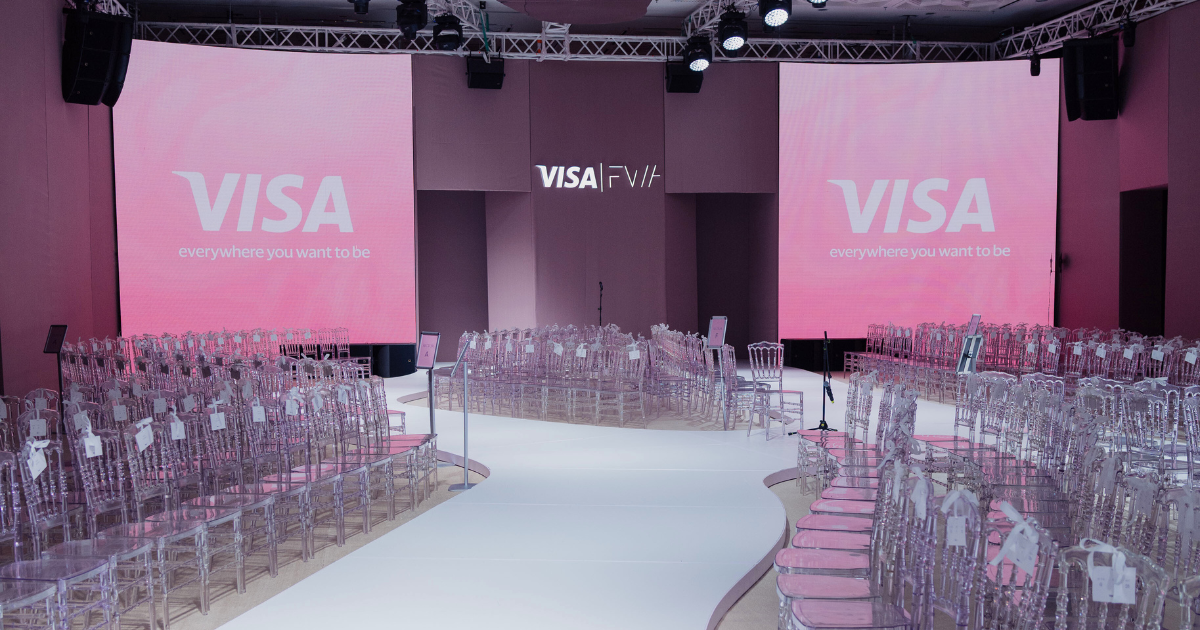Haute Couture Week. Day three
The cinematics of the 1930s, the trials of harsh nature, and the transformation of identity on day three of Paris Haute Couture Week
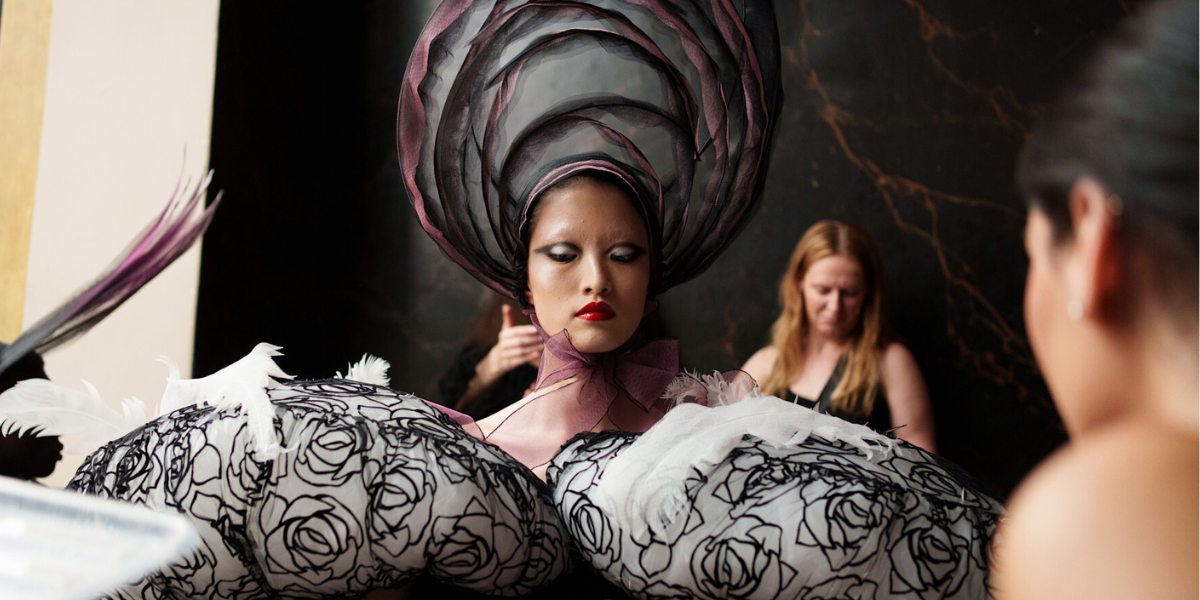
Just when it seems the public can no longer be astonished, fashion finds a way to remind us of its artistic potential. These are the moments when true discoveries are born – when the line between art and haute couture becomes nearly imperceptible.
Day three of Haute Couture Week proved just that: the runways featured creative and refined collections in which unconventional silhouettes met impeccable craftsmanship. Designers showcased varied approaches, but all were united by attention to detail and a pursuit of uniqueness.
Non-trivial collections from Robert Wun, Viktor&Rolf, and the debut show by Glenn Martens for Maison Margiela captivated critics, just when it seemed nothing could surprise us after John Galliano.
Haute Couture Week continues to unfold a richness of ideas, the individuality of design philosophies, and flawless professionalism. Here, fashion transcends trends to become a form of self-expression and a collector’s item.
The outfits presented on day three combined classical elegance with unconventional decisions, all while maintaining the highest standards of tailoring and execution. Every element was thought through to the finest detail, the fabrics selected with precision, just as one would expect in the world of haute couture.
Robert Wun
Designer Robert Wun immersed guests in an atmosphere of personal transformation. His collection “Becoming” was a poetic reflection on the metamorphosis of identity, where each step – a new hairstyle, the scent of perfume, or a final glance in the mirror – is imbued with meaning.
The collection seemed to come alive in an imagined space where fashion becomes not just an outer shell but a mirror of one's inner state. Wun explores the notion of “dressing up” as an act of emotional preparation for significant events. He calls attention to those moments when an outfit helps one feel stronger, freer, or more desirable.
Each piece is born from the very idea of a wardrobe—its purpose and deep connection to the individual. The focus lies not only on cut and structure but on emotional messaging: Robert Wun skillfully fuses haute craftsmanship with cinematic presentation, creating a fashion narrative where the beauty of clothing is revealed through emotion.

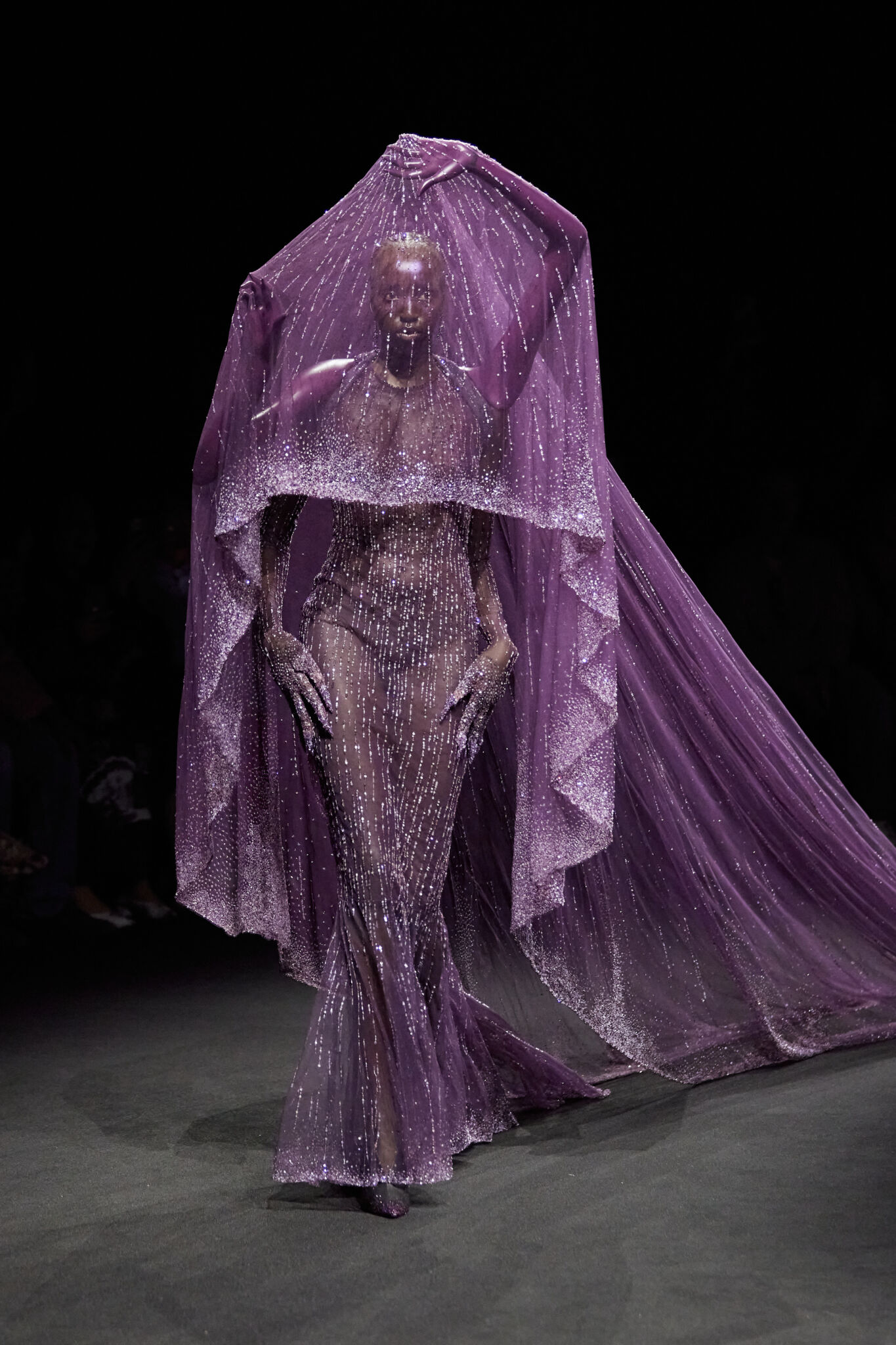

Lever Couture
Lever Couture’s debut with the collection “Anatomy of Identity” offered a profound meditation on how we shape our sense of self, step by step. The show was accompanied by a moving dance from Katja Khaniukova, principal dancer of the English National Ballet and a native of Ukraine, and original music by the British duo I Monster.
Under the creative direction of Sina Braetz, the brand explored the internal structure of personality, juxtaposing vulnerability and strength.
Designer Lessja Verlingieri masterfully combined futuristic technologies with the finest hand craftsmanship, retaining the brand’s recognizable aesthetic – a balance between innovation and refinement.
A transparent green mesh seemed to dissolve in the air, giving silhouettes a weightless quality. Golden fringe added drama and energy in motion, shimmering under the spotlights. The restrained sparkle of Swarovski crystals, hand-embroidered into the garments, created an effect of quiet luxury.
Nude-toned sequins mirrored the models’ skin tone, forming an almost intimate glow on their bodies. Black sculptural elements gave the garments a sense of structure and contemporary power, while a cream-colored honeycomb mesh added volume without heaviness – architecture woven from air.

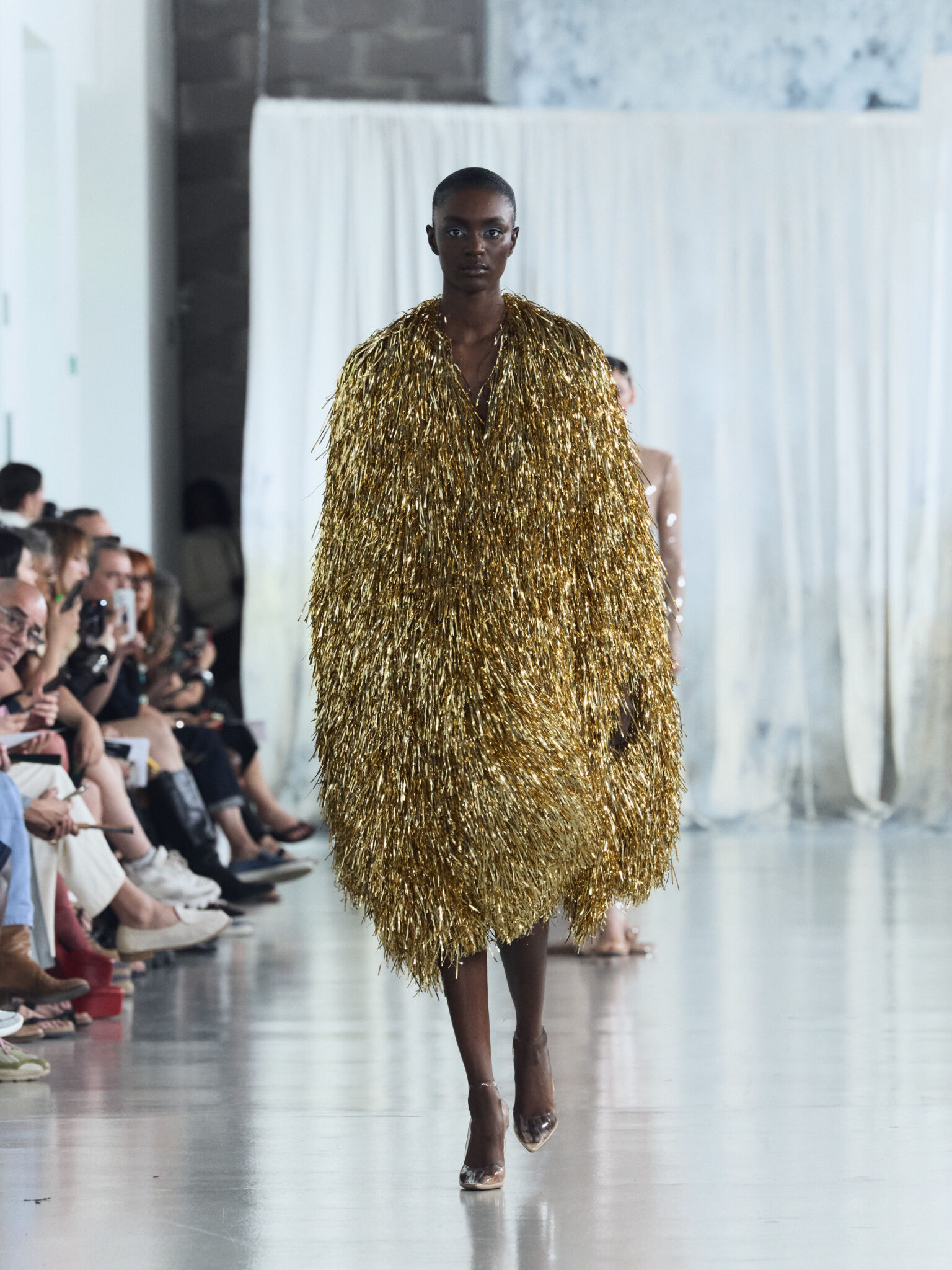
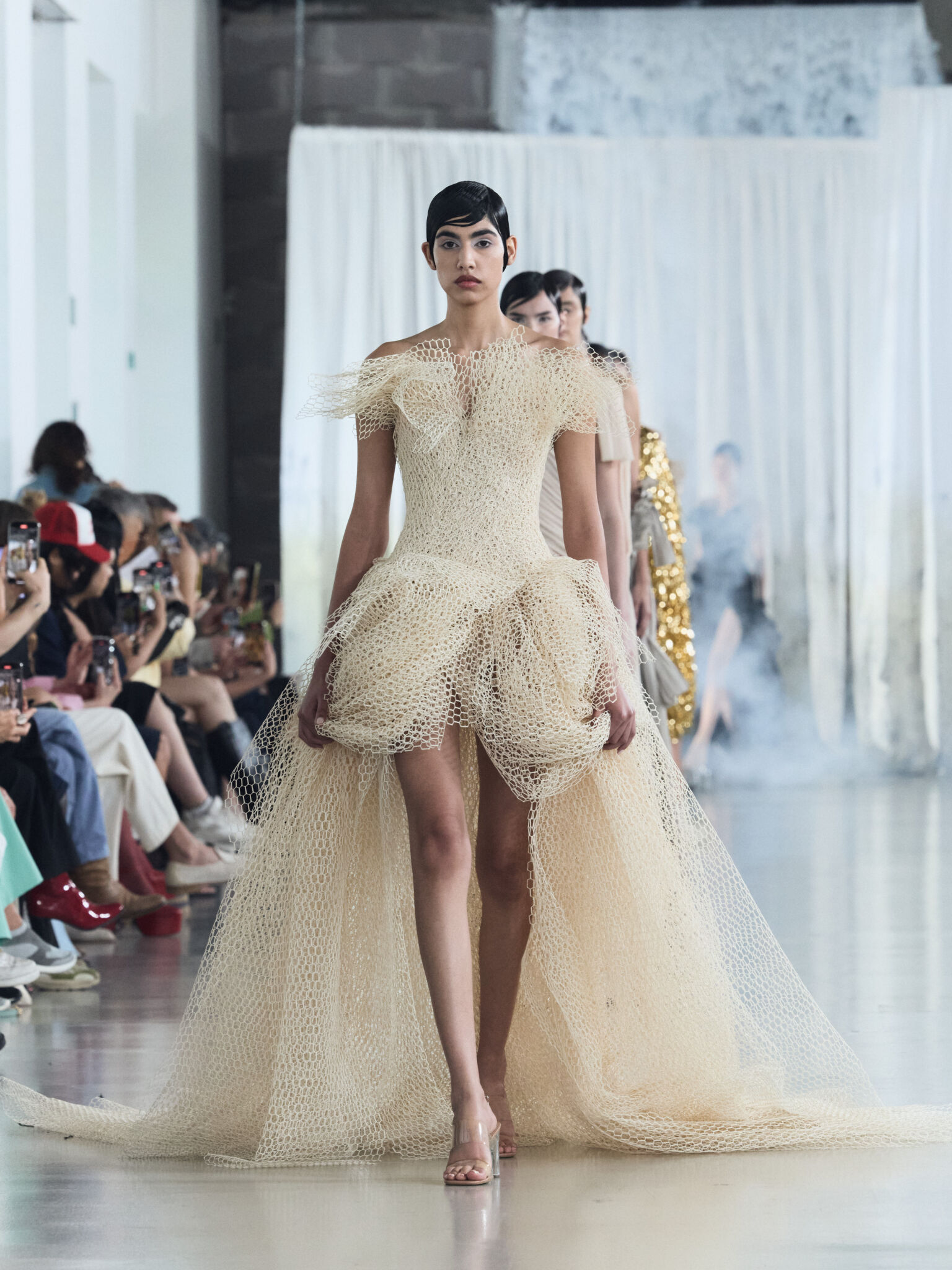
Yuima Nakazato
The Japanese avant-garde designer reflects on the origins of clothing as a means of protecting humans against the harshness of nature. In pursuit of this idea, Nakazato traveled to snow-covered Lapland, where he collaborated with artist Evgeny Ganeev on a photo shoot amidst icy landscapes. A nude body against frozen waterfalls and rivers became a powerful metaphor for the vulnerability of a human stripped of protection.
The collection expanded on this theme through visual and tactile paradoxes. Ceramic dresses, handmade from thousands of tiny fragments, looked like armor yet were easily breakable. For the first time, Yuima Nakazato introduced masks – an emblem of the digital age, where hiding one’s face becomes a desire for self-preservation.
A standout motif in the season was the concept of “quiet resistance.” Chains made of metal were hand-wrapped in mohair – within this union of brute strength and feminine tenderness lies a new form of protest. His work reminds us that while humans are vulnerable, recognizing that vulnerability is the first step toward inner strength.


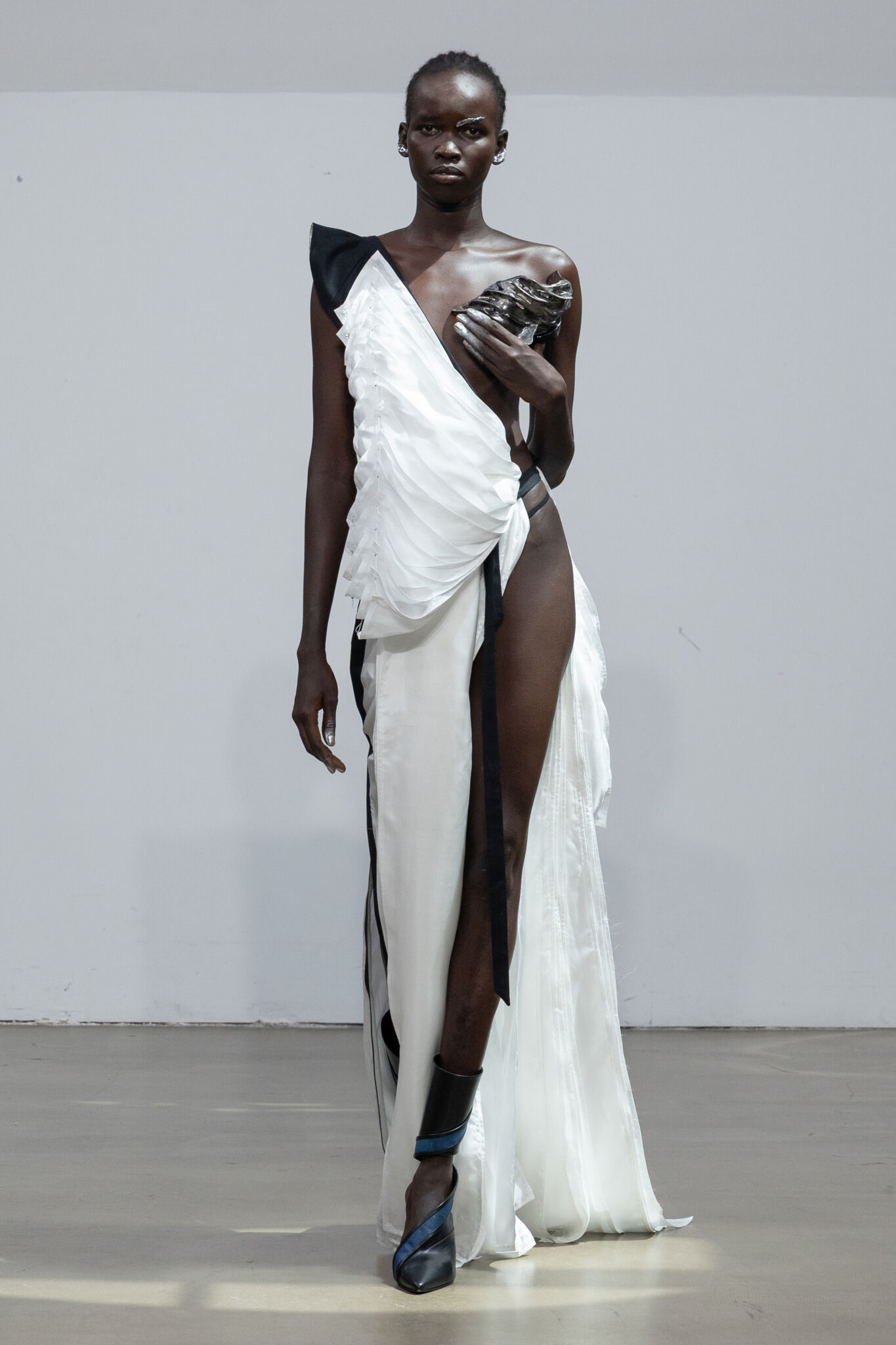
Viktor&Rolf
With distinctive elegance, Viktor&Rolf reimagined the idea of duality and emotional intensity. Thirty looks – fifteen pairs of identical silhouettes – where one ensemble embodied fury and expression through a riot of colorful feathers, while its counterpart remained restrained, “inflated” only by an emotion hidden in the cut.
All feathers in the “Angry Birds” collection were handcrafted – over 11,500 in total – turning each look into an illusionistic masterpiece of tailoring.
In voluminous puffer coats, capes, cloaks, and dresses, the designers played with silhouettes. Traditional black fabrics came to life through vivid feather inserts in shades of flame, sky, or sea foam. Hats by Stephen Jones added theatrical flair – from “tulle fireworks” to futuristic headpieces.
The interplay of materials – from tulle to taffeta, flocked organza to lurex – added not only visual layering but also tactile depth. Viktor&Rolf once again demonstrate that haute couture can be bold, conceptual, and at the same time, spellbindingly beautiful.
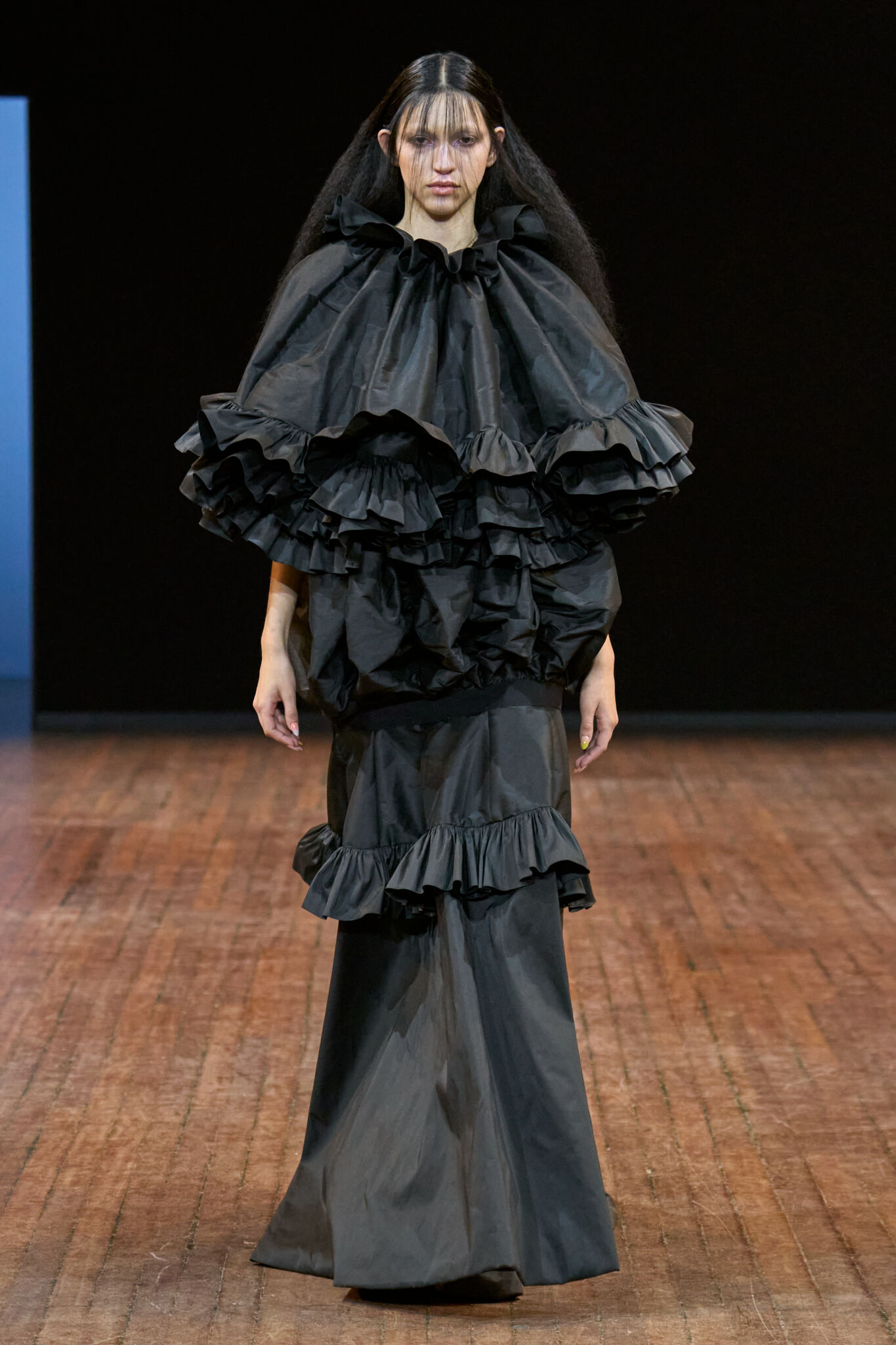
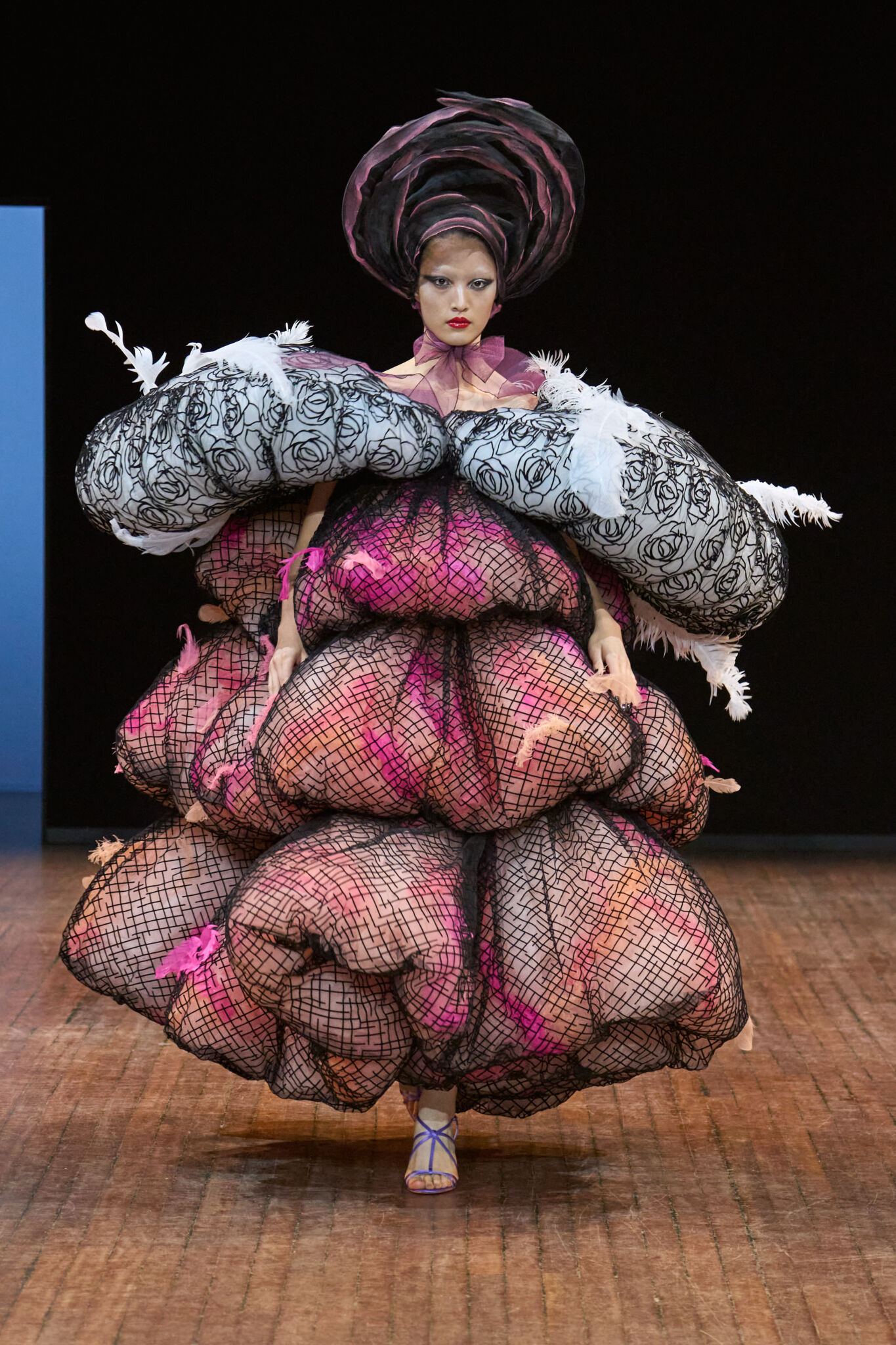
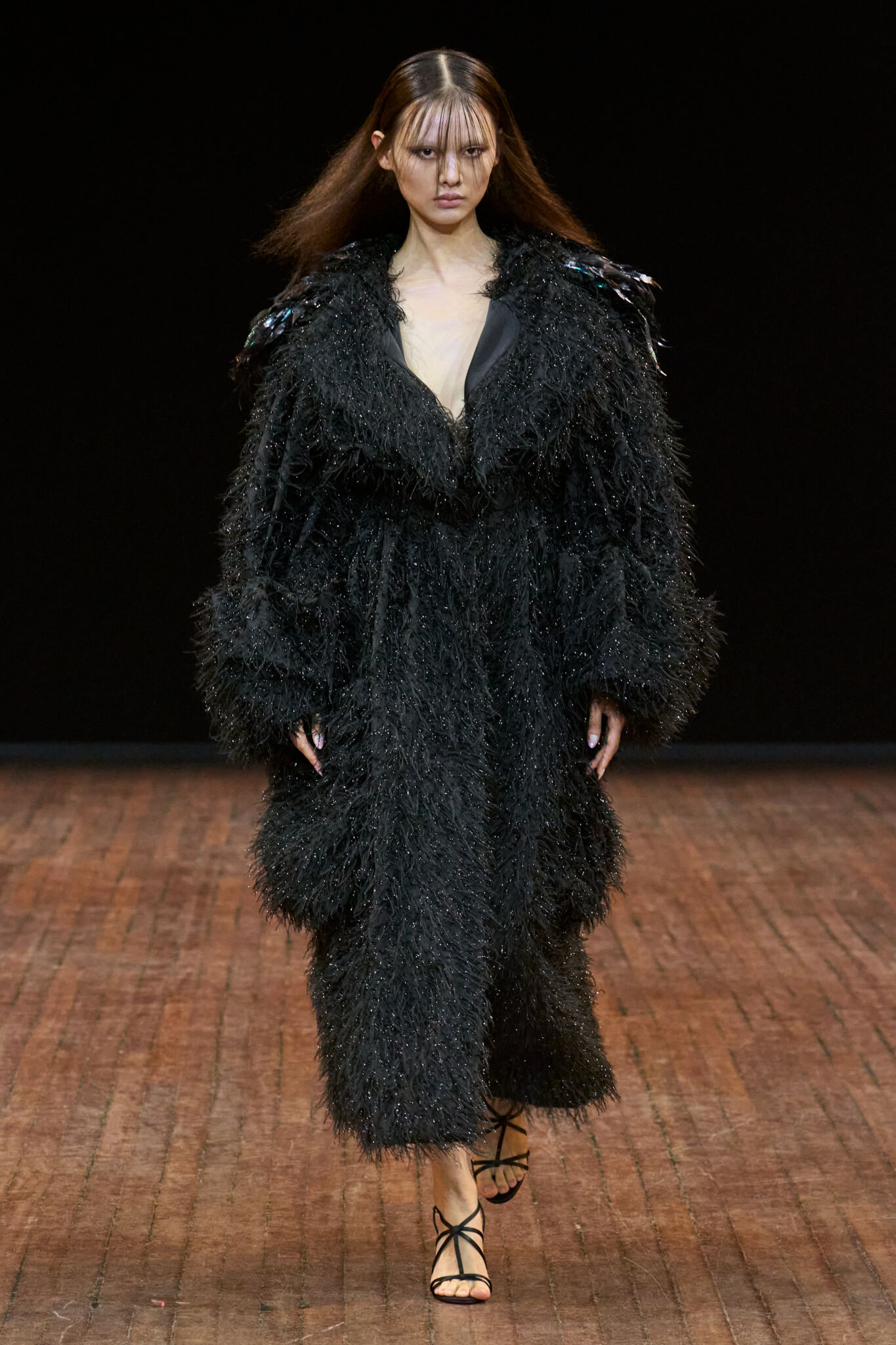
By Fang Couture
Founded by designer Fang Yang and entrepreneur Gregoire Caillol, by FANG embodies a harmonious fusion of East and West. The collection wove together modern and authentic fashion, blending elegance with cultural dialogue. Under Fang’s guidance, each garment took on a recognizable character: every outfit is a balance of strength and refinement, creating a look capable of transformation without overt theatricality. The designer works on the edge of visual minimalism and deep symbolism, finding beauty in nuance. The house demonstrates how cultural blending and masterful execution can give rise to a new language in haute couture.

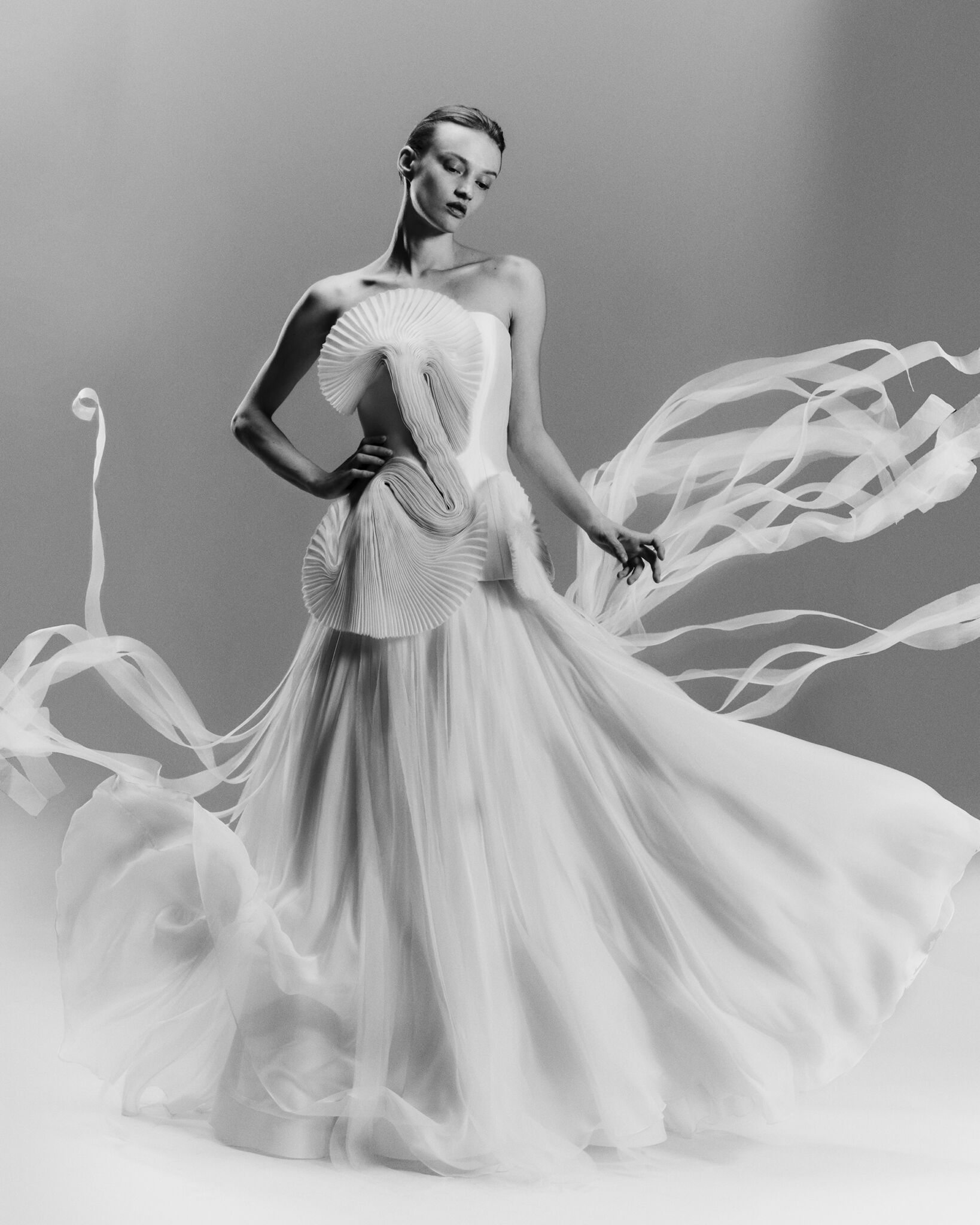

Zuhair Murad
In Zuhair Murad’s artistry, the boundaries between past and future, reality and cinema, fragility and grandeur are erased. In the collection “A Sheer Desire,” the designer turned to the Golden Age of Hollywood, creating an homage not just to the films of the 1930s and 1940s but to the women who shone on screen during those times. Barbara Stanwyck and Rita Hayworth became his muses: Murad offered them an alternate destiny – not tragic, but triumphant, radiant with light and freedom. Silhouettes of that era were reinterpreted: sharp shoulders, draping, and shimmering embroidery became assertions of power rather than mere nods to fashion. The color palette included caramel browns, dusty beiges, midnight blacks, gold on ivory, and scarlet flashes of passion.
Bias-cut gowns flowed like slow-motion film frames, while jackets, embroidered to the level of royal armor, expressed solemn resolve. Muslin flirted with silk charmeuse, tulle, and velvet, engaged in a silent dialogue, and an evening dress styled like a tuxedo spoke in the language of strength and nobility. Faux fur adorned with embroidery became a symbol of new ethics and sensuality. Lace was no longer just lace, and silhouettes reminiscent of damask patterns evoked visions of legendary costume designers of the past – Edith Head or Adrian – refracted through the lens of the future.

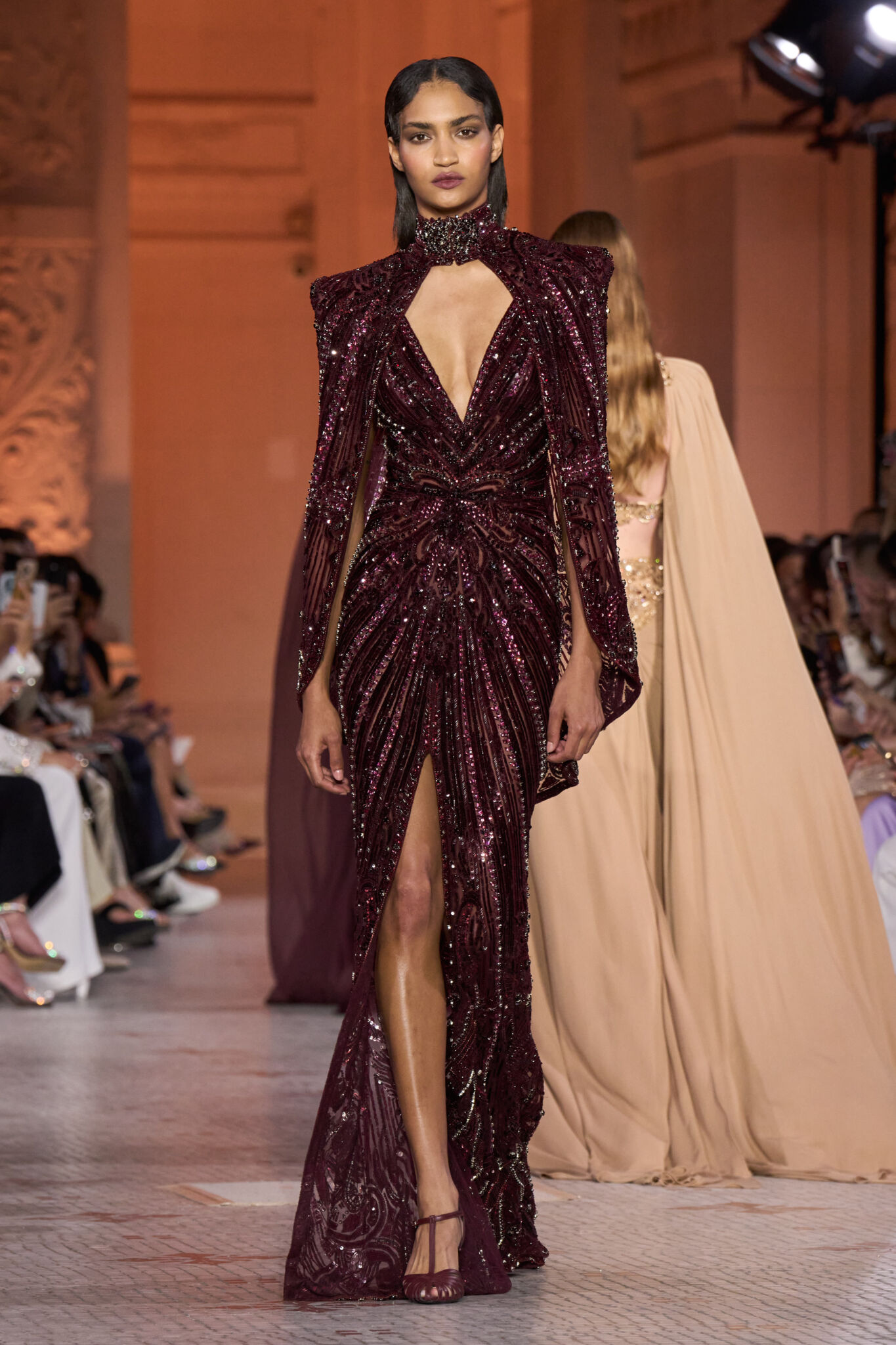
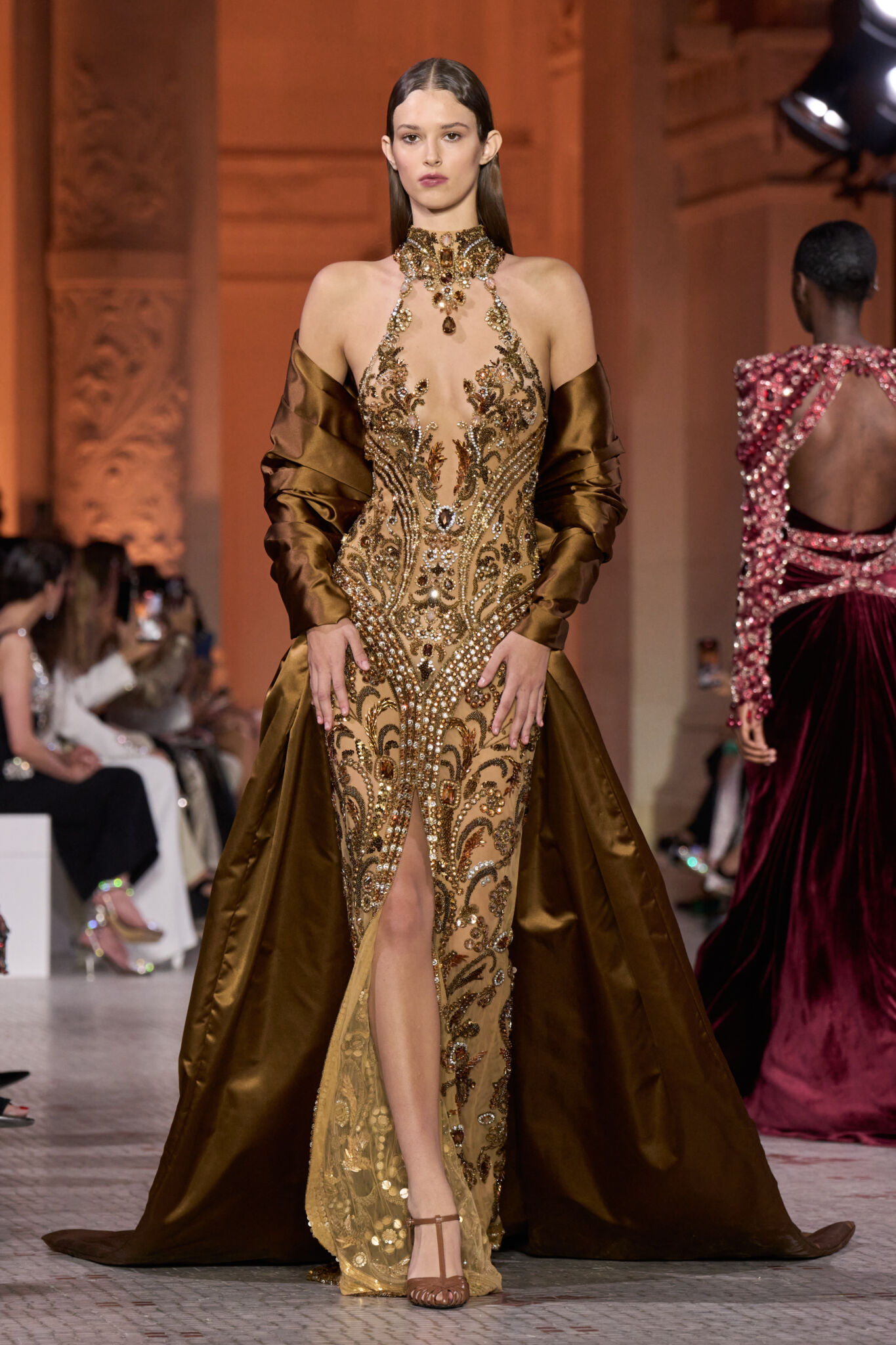
Photos courtesy of the brands’ PR teams.


